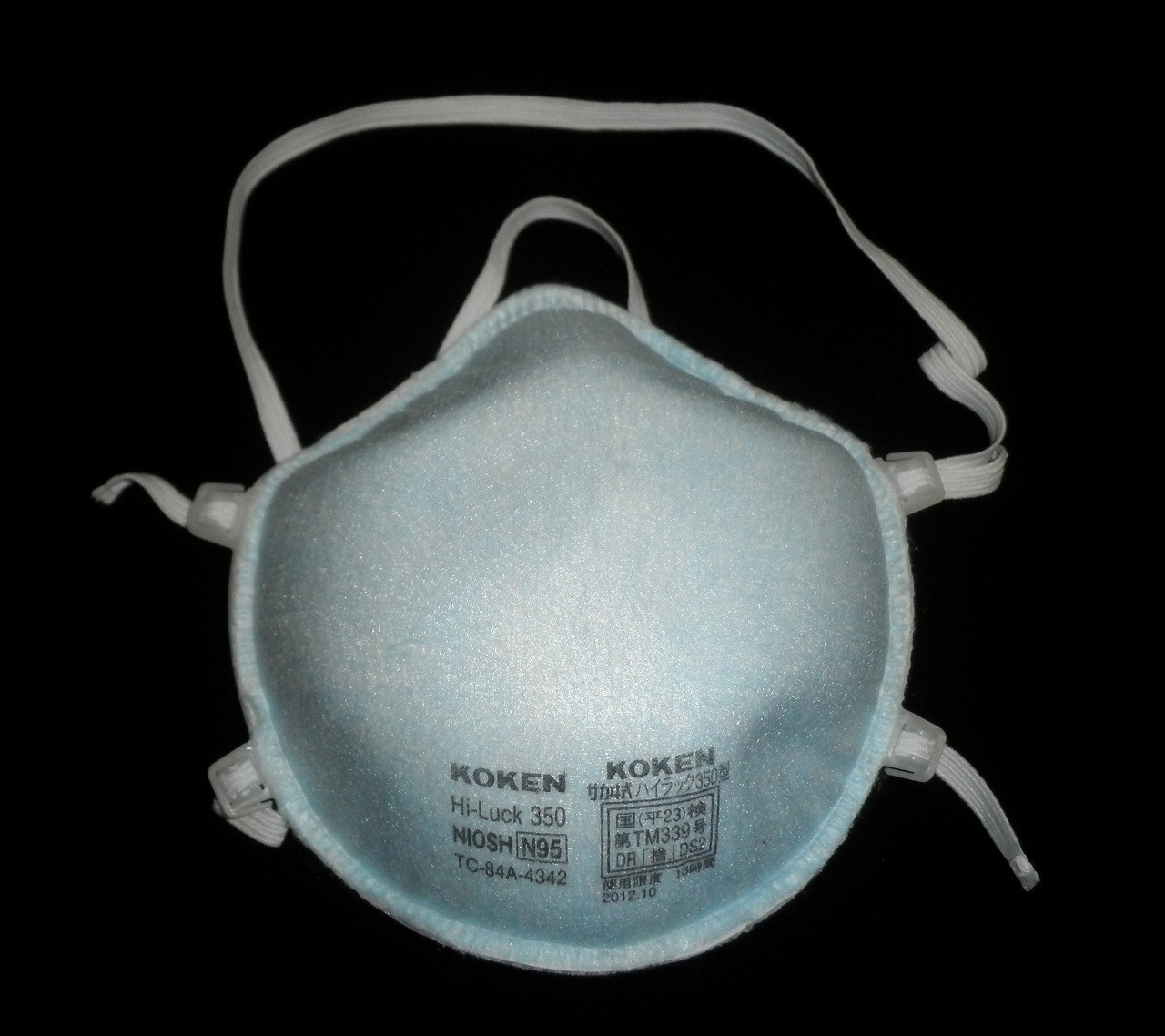NIOSH air filtration rating on:
[Wikipedia]
[Google]
[Amazon]


 The NIOSH air filtration rating is the U.S.
The NIOSH air filtration rating is the U.S.



 The NIOSH air filtration rating is the U.S.
The NIOSH air filtration rating is the U.S. National Institute for Occupational Safety and Health
The National Institute for Occupational Safety and Health (NIOSH, ) is the United States federal agency responsible for conducting research and making recommendations for the prevention of work-related injury and illness. NIOSH is part of the C ...
(NIOSH)'s classification of filtering respirators. The ratings describe the ability of the device to protect the wearer from solid and liquid particulates
Particulates – also known as atmospheric aerosol particles, atmospheric particulate matter, particulate matter (PM) or suspended particulate matter (SPM) – are microscopic particles of solid or liquid matter suspended in the air. The ...
in the air. The certification and approval process for respiratory protective devices is governed by Part 84 of Title 42 of the Code of Federal Regulations
In the law of the United States, the ''Code of Federal Regulations'' (''CFR'') is the codification of the general and permanent regulations promulgated by the executive departments and agencies of the federal government of the United States. ...
(42 CFR 84). Respiratory protective devices so classified include air-purifying respirators (APR) such as filtering facepiece respirators and chemical protective cartridges that have incorporated particulate filter elements.
The classifications only cover the filtration of particles or aerosols
An aerosol is a suspension of fine solid particles or liquid droplets in air or another gas. Aerosols can be natural or anthropogenic. Examples of natural aerosols are fog or mist, dust, forest exudates, and geyser steam. Examples of anthropogen ...
, not the air-purifying respirator's ability to remove chemical gasses and vapors from air, which is regulated under 42 CFR 84 Subpart L. For more information see Cartridge (respirator)
A respirator cartridge or canister is a type of filter that removes gases, volatile organic compounds (VOCs), and other vapors from air through adsorption, absorption, or chemisorption. It is one of two basic types of filters used by air-purif ...
. The classifications assume that the respirator is properly fitted.
NIOSH classifications
NIOSH has currently established nine classifications of approved particulate filtering respirators based on a combination of the respirator series and efficiency level. The first part of the filter's classification indicates the series using the letters N, R, or P to indicate the filter's resistance to filtration efficiency degradation when exposed to oil-based or oil-like aerosols (e.g., lubricants, cutting fluids, glycerine, etc.). Definitions and intended use for each series is indicated below. * N for ''not resistant to oil''. Used when oil particulates are not present. Tested using sodium chloride particles. * R for ''resistant to oil''. Used when oil particulates are present and the filter is disposed of after one shift. Tested usingdioctyl phthalate
Bis(2-ethylhexyl) phthalate (di-2-ethylhexyl phthalate, diethylhexyl phthalate, diisooctyl phthalate, DEHP; incorrectly — dioctyl phthalate, DIOP) is an organic compound with the formula C6H4(CO2C8H17)2. DEHP is the most common member of the c ...
(DOP) oil particles.
* P for ''oil-proof''. Used when oil particulates are present and the filter is re-used for more than one shift. Tested with DOP oil particles.
The second value indicates the minimum efficiency level of the filter. When tested according to the protocol established by NIOSH each filter classification must demonstrate the minimum efficiency level indicated below.
HE (high-efficiency) labeled filters are only provided for powered air-purifying respirators. These HE-marked filters are 99.97% efficient against 0.3 micron
The micrometre ( international spelling as used by the International Bureau of Weights and Measures; SI symbol: μm) or micrometer ( American spelling), also commonly known as a micron, is a unit of length in the International System of Un ...
particles and are oil-proof, and therefore their filter-media material has the exact same specification as a P100 filter.
Since filters are tested against the most penetrating particle size of 0.3 μm
The micrometre ( international spelling as used by the International Bureau of Weights and Measures; SI symbol: μm) or micrometer ( American spelling), also commonly known as a micron, is a unit of length in the International System of Uni ...
, an APR with a P100 classification would be at least 99.97% efficient at removing particles of this size. Particles with a size both less than and greater than 0.3 μm are filtered at an efficiency greater than 99.97%. (That statement does not derive from given reference). Although it is counter-intuitive that particle sizes of less than 0.3 μm are filtered with a greater efficiency, the forces which have the greatest impact on the effectiveness of filtration (aerosol impaction
In the physics of aerosols, aerosol impaction is the process in which particles are removed from an air stream by forcing the gases to make a sharp bend. Particles above a certain size possess so much momentum that they can not follow the air ...
, interception, and diffusion) are weakest at this size for filters tested by NIOSH. A filter's collection efficiency for particle sizes other than those for which it is least efficient is indicated by the filter's efficiency curve.
Similar standards
A few other jurisdictions use standards similar to the NIOSH scheme to classifymechanical filter respirators
Mechanical may refer to:
Machine
* Machine (mechanical), a system of mechanisms that shape the actuator input to achieve a specific application of output forces and movement
* Mechanical calculator, a device used to perform the basic operations of ...
. They include:
* China (GB 2626-2019): Similar testing requirements and grades. Has "KN" and "KP" resistance levels, 90/95/99. Has additional EU-like rules on leakage.
* Mexico (NOM-116-2009): Same grades.
*South Korea (KMOEL - 2017-64): EU grades, KF 80/94/99 for second/first/special
See also
* European respirator standardsReferences
{{reflist Air pollution National Institute for Occupational Safety and Health Occupational safety and health Respirators